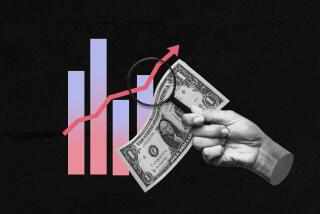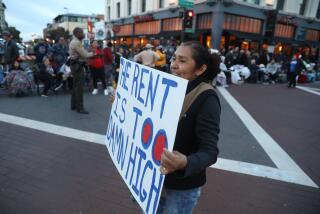COLUMN RIGHT : People Are Moving Up, the American Way : Not just the rich are getting richer. In fact, most people have been getting richer.
- Share via
Everybody these days is beating up on “the rich.” Most of those who do so carefully define “rich” at a level just above their own. Some of the people I know who speak bitterly about “the rich” are themselves, compared with most Americans, up in the stratosphere at $100,000 or more per year. For the public, “rich” begins at about $50,000 per year--the top 20%.
Just who are these “rich” Americans? The most striking characteristic of the top 20% is this: More than any other quintile, it consists almost entirely of families (90%) and married couples (82%). It has four times more married couples than the bottom quintile. In fact, each of the four higher quintiles contains more married couples than the one just below it. Marriage correlates with income.
Why? Some argue that marriage is good for morale and motivation. It certainly gives a point to hard work. Without question, the top quintile has far more workers per household than any other. The Census Bureau reports that a spectacular 93% of the householders in the top quintile work full time (considerably more than in lower quintiles) and that 83% of its households have two to four earners. The average number of full-time workers per family in the top quintile is seven times larger than in the bottom, and almost 50% larger than in the other three. These rich may earn a lot, but most also work a lot.
In addition, people in the top quintile have more years of education, buy and read more books and subscribe to more magazines. Two-thirds of them have had at least some college, and almost half have had four years or more. You don’t have to be a college graduate to be in the top quintile: 32% completed only high school or less. But years of education do pay off.
During the Reagan years, of course, it became harder and harder to “make the cut” into the top 20%, top 5%, top 1%. Not because times were bad, but because they were so prosperous that the dividing line between brackets kept sweeping upward, sometimes galloping upward. Between 1980 and 1988, in constant 1988 dollars, the number of households earning $50,000 or more jumped by 6.3 million. The proportion of all households earning above $50,000 increased from 15.8% to 20.8%. In 1980, it took only $29,070 in annual income to make it into the top 20%, but by 1988 it took $50,593 (in constant 1988 dollars).
A case of the rich getting richer? Not at all. Most people got richer. The Census Bureau divides all households into nine income brackets. Between 1980 and 1988, significant percentages in every bracket moved up. At the same time, the proportion of households in the brackets below $50,000 decreased, while the proportion of those who made more than $50,000 increased. For example, those earning under $15,000 decreased from 28.8% to 27.3% and those earning from $15,000 to $49,000 decreased from 55% to 51.9%.
Where did all these folks go? They moved up. The $50,000-$74,999 bracket increased from 11.3% to 13.4%; the $75,000-$99,999 bracket went from 2.9% to 4.2%, and the topmost bracket (above $100,000) doubled, from 1.6% to 3.2%.
This upward shift in all household income brackets during Ronald Reagan’s presidency accounts for his popularity. Although in constant 1988 dollars only 20% of households had incomes above $29,070 in 1980, by 1988, 38% of all households earned more than $35,000. This is phenomenal economic progress.
Meanwhile, this epic upward mobility helps to explain why the tax burden also shifted upward during Reagan’s years. Although figures for 1988 are not yet available, in 1979, the top 10% (in adjusted gross income, more than $32,710 in constant 1987 dollars) paid 49.5% of all U.S. personal income taxes. But by 1987, those in the top 10% ($54,700 or above) were paying 55.4% of all income taxes, and the top 1% paid nearly one-fourth.
Left-wing critics sometimes retort: “Of course the rich were paying more taxes--they were earning more!” But this retort plays right into the hands of the supply-siders. Their prediction was: “Greater incentives yield higher revenues.” If you want higher tax revenues from the rich, you should lower tax rates. And if you want lower revenues, raise rates. It breaks the hearts of the left but, alas, only as the rich earn do their income taxes pour in.
So let’s cut the hypocrisy. Most of those who regularly bash the rich--including politicians and TV journalists--are in at least the top 20% (or much higher) themselves. And if they want to give even more of their money to the government, they can volunteer. “Put up or shut up” is sound advice they should heed.


